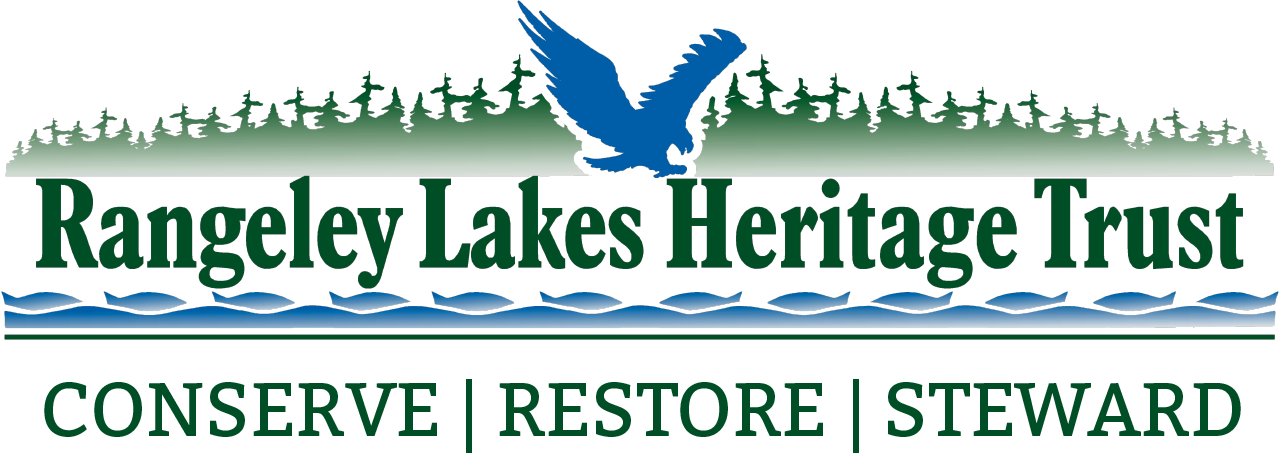FIND A CONSERVATION AREA
Land Use FAQs
FAQs
Yes! Please be neighborly and control your dog at all times. Pick up after your pet.
Camping is allowed in designated areas only and on specific properties. RLHT owns Cupsuptic Lake Park and Campground and has easements on Stephen Phillips Memorial Campground. Both campgrounds require reservations.
Our Community Conservation Corps Trail Stewards maintain our 35 miles of trail AND several miles of our partner’s trails. The CCC is comprised of both volunteer and paid positions and includes our Headwaters Lake Protection Program and EcoVenture programs. Support the CCC with the gift of a donation.
Honestly, sometimes. Depending on your carrier, you will have significantly different signals in our region. Plan your adventures with hardcopy maps, etc.
Hiking, biking, photography, birding, snowshoeing, Plein air painting, stargazing, fishing, paddling, hunting, snowmobiling, and forest bathing are a few. Each property has unique recreational uses that we’ve listed to help you find your next adventure.
Be a volunteer CCC member with a brief trail report done from your phone! Let us know where, and what, and snap a photo. We get an email and can target our efforts! We also appreciate pictures of the community enjoying the trail. We appreciate your help.
RLHT prohibits all use of drones for purposes of recreational or commercial use, unless approved by writing in advance. RLHT may approve applications for the operation of unmanned aerial vehicles for scientific research, mapping, authorized photo/film shoots, or for RLHT management projects. This policy supports our commitment to the protection of wildlife and the safety, privacy and well-being of our visitors.
Hunting, fishing, and trapping are permitted on all of our parcels, except for Bonney Point, Hatchery Brook, Hunter Cove Wildlife Sanctuary, and Hunter Cove Uplands, which are part of a state-designated game preserve.
Commercial hunting, fishing, and trapping will be considered and approved on a case-by-case basis by RLHT stewardship staff and must have a written letter of permission from RLHT.
Plan on how to handle bathroom breaks on the lake for yourselves and your animals. There are public facilities at the public boat launches. Other land is owned privately, and it is against the law to trespass.
Minimize food packaging and debris before getting on the boat. All waste and garbage should be packed off the lake with you.
Please do not raft-up within proximity of private camps.
Everyone is relaxing and your good time shouldn’t ruin theirs. They can’t move, but you can.
Sound carries extremely well on a lake. Be mindful of the camps & others around you and their right to enjoy peace and quiet.
Motorized boat MUST be at headway speed within 200 feet of shore. Please keep your wake low so children and wildlife may also enjoy the use of the lake.
Watch wildlife from a respectful distance. Stressing loons and other waterfowl may affect their ability to rear young.
Commercial foraging of mushrooms, fiddleheads, ginseng, blueberries, wildflowers, fir tips, gold, chaga, or other natural resources are prohibited on properties owned by RLHT. An exception is made for fir tips following review by RLHT stewardship staff to ensure alignment with the forest ecosystem management plan.
Personal foraging of these natural resources will be considered and approved on a case-by-case basis by RLHT stewardship staff. All foragers must have a written letter of permission by RLHT.
Most of the trails in the trail system are non-motorized; however, RLHT owns 14 miles of motorized trails that are open for snowmobiling.
A conservation easement is a voluntary legal agreement between a landowner and a land trust or government agency that permanently limits the use of the land to protect its conservation values. Explore our land conservation requirements here.
First, contact our Stewardship Director, Shelby Rousseau, to learn about potential options. Then, talk to your financial advisor about tax and other benefits.
Yes, RLHT and most land trusts in Maine pay property taxes on most of their lands. Like most landowners in rural Maine, RLHT enrolls its woodlands in the state’s Tree Growth tax program.
Practice Leave No Trace
Being prepared means knowing where you are going before getting there. Pack a map, talk with hikers and look at trail apps. Choose equipment for comfort, weather, and safety. Plan the trip to match your time, skills, and abilities.
We strive for one well-designed trail rather than many poorly chosen routes. Stay within the width of the trail and hike single file on durable surfaces, like rock and sand. They can withstand repeated use. Durable surfaces are less likely to erode. Vegetation, including the lichen that grows on rocks, is fragile and easily damaged by treads.
Use privies when available and be prepared to dig catholes where they are not. Be considerate to others by packing out your pet’s waste.
We ask that you properly dispose of human waste to avoid water source pollution, avoid visitors stepping in it, minimize the spread of disease, and maximize the decomposition speed.
Allow those who come after you the same sense of wonder by leaving flowers, rocks, plants, archaeological artifacts, and other objects of interest where they are.
Permitted campfires are allowed in the established fire ring. State of Maine laws apply. Use regionally sourced firewood to prevent the spread of invasive plants and animals.
When wildlife watching, we recommend using the Rule of Thumb. Don’t touch, get near, feed, or pick up wild animals. Doing so causes them stress, and they may have a harmful disease to humans.
Always be courteous to other visitors. Many RLHT trails are multi-use. Everyone deserves to enjoy a positive outdoor experience. Be mindful of your noise level, be a responsible pet owner, and enjoy the natural world.



